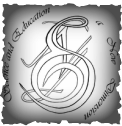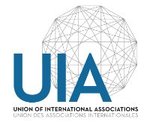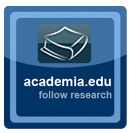Science and Education a New Dimension
Iss. 46. 2015.
Dzhelilova L. Turkish literary works in the children's folklore
Abstract. Folklore is an oral folk arts. Posing the problem to introduce children to the Crimean Tatar folklore, on our lessons we strive to give children the idea of folk songs, dancings, round dance, slogans, solo parts, to introduce preschool children to elements of some folk ceremonies and celebrations that available to the understanding of modern children. Learning and teaching about the origins of the national culture, customs of the nation that have arisen in the past, also forms the picture of the future. Folklore is wisdom of the people. The concept includes a great deal, including folk arts – a complex and multifaceted phenomenon of the culture. This concept is deep, because it lives with the people, rooted in the antiquity. The origins of the Crimean Tatar children’s literature are in the oral national creation of the people. Thus the first genres of children’s literature begin to form. Crimean Tatar children’s literature, the emergence of genres, development, translated children’s Crimean Tatar literature – all of these are the new poorly studied topics. In this article we will try to discover the origins and to determine the genre of the first Cri- mean Tatar children’s literature.
Keywords: Crimean Tatar children’s literature, folklore
Dzhelilova L. Turkish literary works in the children’s folklore
Ibrahim Ozdenoglu. The activity of Gaspirali Ismail Bey’s children and grandchildren, some ideas about it
Annotation. This Article deals with the Family members of the great Crimean Tatar educator and the publisher of the first Crimean Tatar Newspaper «Tercuman» Gaspirali Ismail Bey. It gives information about Kurultay of the Crimean Tatar People which opened in Crimea on November 17, 1917. There were 76 representatives of people there and among them was Shefika Gaspirinskaya. She began to write very early. Her first article was written when She was only seventeen years old. Shefika lived in Crimea t ill September 1919. And then moved to Azerbeycan, Baku..She was the writer, publicist, educator, administrator and a member of Ku- rultay’s Chairmanship. She moved to Turkiye in 1921. During first 35 years of her life, She used to write a diary. But after her arrival to Turkiye, She did not write a single sentence. She lived in Turkiye 54 years and died there in 1975. She was not very active all the years spent in Turkiye from political and social point of view. The article reveals the reason of this phenomena. It also gives new, very interesting and unknown to the audience infor- mation about Ismail Gaspirinski’s Granddaughter Meral Gaspirali and Shefika Gaspirinski’s Grandson Demir Mirza Gokgol. About their life and creative work.
Keywords: Administrative, publisher, educator, representative, the article, the diary, Kurultay, Crimean Tatar People
Ibrahim Ozdenoglu. The activity of Gaspirali Ismail Bey’s children and grandchildren, some ideas about it
Rymorenko T. The Emergence of new artistic trends and their impact on the development of society
Abstract. In the article “The Emergence of new artistic trends and their impact on the development of society” are we talking about the fact that the changes in art are closely connected with the philosophy of the company. Change the attitudes of people, and it changes the assessment criteria in art. Fine art extremely versatile. The article aims to analyze the influence of changes in the visual arts to the philosophical understanding of the world around us. Appreciation of art implies appreciation and contemplation of the world around us. Though artworks develop under the influence of the relevant social trends, they, as a cultural phenomenon, make an impact on a society as well. The philosophical worldview is not alone in its desire to encompass nature, society and the rational. Artists also try to reflect these issues in their works. Perhaps every philosophical trend has artworks that reflect the corresponding ideas. Arts give insight into the worldviews of the past. Decorative art is incredibly multifaceted and mirrors human history as well as the emerging worldviews specific for the particular historical periods. A well-known American sociologist A. Houser wrote, “Artworks are more related to the time they come from than to art in general or the art history as a general process.”
Keywords: artistic endeavor, philosophy, arts, societal worldview, culture, epoch
Rymorenko T. The Emergence of new artistic trends and their impact on the development of society
Abibbulaeva D. Usein Balic’s historiography about the development of public education in the Crimean ASSR during 20s of the XXth century
Abstract. The article deals with the life and public activity of the well-known Crimean Tatar social and political figure – Usein Balich. It shows the analysis of Usein Balich’s works, dedicated to folk education, published as a result of his work in the Ministry of Education of Crimean ASSR. Destroying old school-studies and clearing the road of new Soviet school the published positions of RSFSR’s Narkompros of 1919 г. could not then yet set single for all Union concrete ways educations that every republic began to search for itself, and already 1920 г. two systems of the folk education were fully determined: Ukrainian and Moscow. The article analyses weak and strong parties of these two systems. So, the Ukrainian system was built on 7-th year socialistic education, that was thought as mass school. The strong side of the Ukrainian system is that it links two basic vertical lines of social and professional education.
Keywords: Narkompros, system of folk education, Crimean ASSR
Abibbulaeva D. Usein Balic’s historiography about the development of public education in the Crimean ASSR during 20s of the XXth century
Abibullaeva E.E. The development of primary education for women in the Crimea in the second half of XIX - early XX centuries
Abstract. This article discusses the development of women’s education Turkic Muslim Crimea in the second half XIX- early XX centuries, as well as the formation of “novometodnyh” schools for girls, the contribution Ismail Gasprinsky, Shefika Gasprinskaya, Pemba Bolatukova (Gasprinskaya) in the formation of these institutions.
Keywords: women’s education, women’s education Turkic-Muslim in the Crimea, I. Gasprinskii, didactic system, Sh. Gasprinskaya, “novometodnaya” school for girls
Abibullaeva E.E. The development of primary education for women in the Crimea in the second half of XIX – early XX centuries
Ablitarova А.R. Development of socio-emotional orientation of preschool children from single-parent families in modern conditions
Abstract. The article describes the mechanisms and stages of development of socio-emotional orientation of preschool children, their peculiarities in single-parent modern family. Family always takes the first, dominant place for child, it is both the habitat and educational environment. The influence of the family, especially in the initial period of a child’s life, much higher than other educational impact. Under the influence of stereotypes socio-emotional orientation of children in today’s society is rather complicated by the fact that family is the first and most important social institution, and if the family is incomplete or dysfunctional, the knowledge gained in this institution, would be turned against the child. In modern society, it is an acute issue that family cannot cope with its main function – children education, including gender education.
Keywords: child, family education, single-parent family, socio-emotional orientation, socialization
Ablitarova А.R. Development of socio-emotional orientation of preschool children from single-parent families in modern conditions
Adzhimambetova G.Sh. The syntactic features of adverbs of the crimeantatar language
Abstract. The syntactic functions of adverbs follow from its semantics. In the sentence adverbs come into dependent connection with the verb and adjective. Combining with a verb, they execute functions: а) of different adverbial sentence parts, b) of adverbial attribute. In combination with adjectives the role of the sentence part at an adverb is considerably weaker; therefore it is not separate part of sentence, and serves for strengthening or weakening of the attribute’s value. In a syntactic plan crimeantatar adverbs are characterized that their main syntactic function is an adverbial modifier (of time, of place, of aim, of reason, of character of action, of measure and degree). Moreover, they can also act as other sentence parts, in particular as the attribute, the object, in the predicate. The adverbial modifier of character of action often expressed by the adverb of action, among that there can be both derivative and non- derivative adverbs. It is possible to make conclusion from the analyzed examples, that derivative adverbs are more often used in the function of the adverbial modifier of character of action, than non-derivative. Characterizing an action in quantitative relations, adverbs act in sentences the role of adverbial modifier of measure. The adverbial modifier of place, expressed by the adverb, indicates the direction to a point. The adverbial modifier of time shows that the sign of action is related to the certain moment of time. They explain a verbal predicate more often, because temporal descriptions make the grammatical value of verb, but can belong to the nom- inal predicate too. The adverbial modifier, characterizing an action from the point of view of purposefulness, can be expressed by the adverb of aim. The adverbs of reason in sentence are the adverbial modifiers of reason, underlining founding by effect of that an action takes place.
Keywords: the Turkic languages, the crimeantatar language, the adverb, the lexical-grammatical features, the sentence parts, the syntactic functions
Adzhimambetova G.Sh. The syntactic features of adverbs of the crimeantatar language
Akmallaev T. History of studying ashyks’ poetry in crimean tatar literature lessons
Abstract: Ashyks’ art, being considered the professional sphere of turkic verbal folk literature, on the genre and only to him to the inherent signs richly and diversely. A specific of Ashyks’ poetry is maintenance of the existence and development of her without tearing away from a national environment, with care saving national roots, connections with classic tradition. Since a middle 60th of ХХ of century Ashyk literature is widely investigated by the scientists of the whole world. Faithful vision and interpretation of medi- eval, east literary text depend on careful research and knowledge of cultural and historical environment. Existing on this topic literature can be classified on three basic directions: historically-descriptive, conceptual and comparativist. Exactly she became basis for formation of new anthological edition of Turkish Poets (1965). This anthology embraces information about Ashyk with XV – XX sent. The folded factografik base testifies that in a Ashyks’ poetry always sharply a problem stood in an exposure and interpretation of material. It is presently impossible to be limited to the dry list of facts or selection of one or another features of literary heritage. Since a middle 60th of ХХ of century Ashyks’ literature is widely investigated by scientists. The researchers of L. Alkaev and А. Babaev in a book on “Turkish literature” (1967) recreate the cultural atmosphere of Turkey. İ. V. Borolina, presents information about some Ashyk.
Keywords: Ashyk, Ashyks’ tradition
Akmallaev T. History of studying ashyks’ poetry in crimean tatar literature lessons
Alimova L., Ametova E. Human and national values in the pedagogical heritage I. Gasprinsky
Abstract. Common to all mankind and national values of education are characterized in the research; groups of educational values are revealed; the contribution of Gasprinskiy in to development of national values of education as inalienable of general educational values is indicated. Some significant aspects of Ismail Gasprinskiy`s heritage in the development of Crimean – tatar`s schools in IXX – beginning of XX centuries are distinguished.
Keywords: human values in education; national values in the education; pedagogical heritage of Ismail Gasprinskiy
Alimova L., Ametova E. Human and national values in the pedagogical heritage I. Gasprinsky
Zarema Amet-Usta. The benevolent attitude to people of different nationalities in senior preschool children in the scientific field of study
Abstract. In this article in order to discover the essence of benevolent attitude towards people of different nationalities in children of 5-6 years old, an attempt is made on the basis of analytical characteristics of such concepts as “benevolence”, “attitude”, “nationality”, “multi-ethnic environment” as well as the age characteristics of preschool children. Based on the analysis of the philosophical, psychological and pedagogical literature, various scientific approaches to the interpretation of the personality’s benevolence and its system of relationships in multi-ethnic environment is studied. Benevolent attitude towards people of different nationalities is viewed as emotionally positive attitude towards representatives of different ethnic groups, which manifests itself in the understanding and adoption of their ethnic identity by a child, sustained interest in life, mode of life and culture, as well as maintaining friendly relations with them in a variety of activities (communication, game, work, and study). The environment in which a person is being educated is needed to be extremely important to consider. It is significant above all if the child lives in a multi-ethnic or mono-ethnic environ- ment, and compactness of the ethnic environment is also counts much. Considering this, a child realizes its ethnicity faster and the knowledge about the differences between ethnic groups are acquired by him earlier if the child’s socialization takes place in a broad multi-ethnic space.The term “multi-ethnic environment” is defined as an environment where culture and traditions of different ethnic groups cross, which creates favorable prerequisites for positive perception of ethnic differences and solution of emerging life prob- lems through dialogue and cooperation. The author believes that the benevolent attitude towards people of different nationalities is not transmitted genetically, but it is formed in the process of socialization of the child under the influence of many social institutions, primarily in the process of education. The effective education of being benevolent to the people of different nationalities is happening in terms of its natural connection with the life of preschool children and is determined by their interests, desires, motivations and expectations. Lack of experience in interethnic communication causes smaller predisposition of a child to such contacts as well as smaller interest in their own ethnic identity. It is found that senior preschool age is a period of formation of cognitive, emotional and behavioral resemblance of a child with the representatives of their ethnic group, as well as the consolidation of relations with people of different nationalities.
Keywords: nationality, attitude, senior preschool age, benevolent attitude, multiethnic environment, personality
Zarema Amet-Usta. The benevolent attitude to people of different nationalities in senior preschool children in the scientific field of study
Anafiyeva E.R. Linguistic Principles of Ukrainian language teaching in schools with the Crimean Tatar language learning
Abstract. The problem of identifying key basic linguistic foundations of Ukrainian language teaching in schools with the Crimean Tatar language of instruction.
Keywords: native language, transposition, interference, language interoperability
Anafiyeva E.R. Linguistic Principles of Ukrainian language teaching in schools with the Crimean Tatar language learning
Assanova I.M. The problem of educational cooperation in the theory and practice of primary education
Abstract. This article deals with the problems of educational cooperation in the theory and practice of primary education. The forms, techniques, styles, educational cooperation. The most essential features and phases of educational cooperation.
Keywords: collaboration, educational cooperation, interaction
Assanova I.M. The problem of educational cooperation in the theory and practice of primary education
Asmanov A. R. Pedagogikal basis of upbringing the culture of inter – ethnic communication among pupils in modern com- prehensive schools
Abstract. The problem of forming the culture of the inter-ethnic communication among pupils of the modern comprehensive schools is relevant in any country where the process of upbringing the young generation is being realized on the principles of humanism, development of the democratic relationships, friendship and respect for the representatives of other ethnic groups. Taking into account the changes in the ethnic awareness of the people of all nationalities inter-ethnic communication have to be realized on the principles of humanism and cultural expediency in close link with national and universe values. Native language, national customs and traditions can become a basis for developing culture of the inter-ethnic communication. Studies of the essence and functions of the national traditions and customs are closely connected with cultural continuity. Therefore it is very important to determine how much the application of national traditions and customs is suitable in the development of harmonious inter-ethnic relationships. There is no sublime educational system in the world. Any system of education is based on cultural-historical nation’s traditions and depends on sociocultural, economic and political realities of the certain state. In the systems of education in Russia, Ukraine and other Slavic countries great cultural and scientific potential and facilities do exist; they enable further progressive development of the education on the basis of multiculturalism. Multicultural educational space is meant to perform as a uniting factor in the constant development of nations and countries. It is base for the international entente of the variety of ethno cultures on the way to upbringing an advanced personality with humanism orientation, real cosmopolitan and personality of culture.
Keywords: international relations, multicultural society, national customs, multi-ethnic school, traditions, customs, native people, love for the Motherland
Asmanov A. R. Pedagogikal basis of upbringing the culture of inter – ethnic communication among pupils in modern com- prehensive schools
Balichieva D. Complex evaluation on the environment quality in the study of childhood morbidity
Abstract. The article presents a complex evaluation on the environment quality in the study of childhood morbidity upon negotiabil- ity. It was made an attempt to quantify the state of the environment, taking into account all the factors, including hygiene, medical and biological and social conditions of the population’s life. It was developed and presented a number of mathematical models of complex influence of anthropogenic environmental pollution both in the total index (DDEAS) and the individual factors in their vari- ous combinations on the childhood morbidity. It was given the analysis of correlation and regression interconnection of child popula- tion morbidity (per 1000 children) upon the negotiability with the DDEAS value, which showed the strongest interconnection with the general morbidity level (correlation coefficient r = 0,93 and the coefficient of determination CD = 85.84%), endocrine system diseases, feeding indigestion, metabolic diseases and immunity disturbance (r = 0,98, CD = 9.81%). It was recommended to create a database bank on the degree of the environment pollution and the population health, which will be the basis for the developme nt of priority health measures to identify cause-effect relationships and monitoring of the children health state in relation to the changing environmental situation in the region.
Keywords: Environment, unfavorable factors, regression, correlation, morbidity, childhood, database, monitoring, environmental situation
Balichieva D. Complex evaluation on the environment quality in the study of childhood morbidity
Bahicha E. Multicultural educational environment as a means of preparing future professionals of preschool education
Abstract. This article describes the pedagogical conditions and the content of training of the future nursery school teachers for professional activity in multicultural environment of Crimea, it provides data ascertaining and forming the experiments.
Keywords. Training of the future nursery school teachers, professional activity, multicultural education, multicultural bringing up, multicultural competence, multicultural environment, inter-ethnic education, tolerance and inter-ethnic tolerance, tolerant interaction
Bahicha E. Multicultural educational environment as a means of preparing future professionals of preschool education
Butvina O. The role of the genotype and environment interaction in the development of children's intelligence
Abstract. The article deals with the interconnection of heredity and environment, their influence on the development of children’s skills, genius, intelligence. The classification of the five stigmas of genius is revealed, which are represented by different features that distinguish men of genius from normal one. The analysis of research in the study of the mind depending on the genotype and the environment is presented, the dominant role of heredity in the development of men’s intellectual abilities is revealed. Modern typology of educational system is illuminated.
Keywords: giftedness, genius stigmas, types of environment, genotype, genius, intelligence
Butvina O. The role of the genotype and environment interaction in the development of children’s intelligence
Dzhafarova O.S. Psychological and pedagogical approaches to the definition of the self as the gist of the creative self-expression of personality
Abstract. The article presents the main approaches to the understanding of the self as the gist of the creative self-expression of personality. Starting characteristic of the self is multidimensionality, which leads to the realization of the need of interdisciplinary self- study in philosophy, psychology, pedagogics and other sciences. Descriptive characteristics of the self are revealed, discovering a variety of manifestations of its essence: social, psychological, communication, metaphysical etc. Analysis of the self-concept leads to define deeper the concept of self-expression: reveals those essences (thoughts, desires, feelings), which we express in the process of various activities.
Keywords: self, the individual, actualization, self-expression
Dzhafarova O.S. Psychological and pedagogical approaches to the definition of the self as the gist of the creative self-expression of personality
Dronzhek N. Formation of the foundations of the legal culture of preschoolers in modern conditions
Abstract. The article discusses the basics of formation of legal culture of preschoolers in modern society, the result of which is their legal education; the ways of forming the basics of legal culture of preschoolers in modern society is also revealed. The psychological and pedagogical features of senior preschoolers are revealed. The formation of the foundations of legal culture as a result of legal education of senior preschoolers is reviewed.
Keywords: legal education, legal culture, senior preschoolers, legal culture of personality
Dronzhek N. Formation of the foundations of the legal culture of preschoolers in modern conditions
Zhukova N.D., Sokolova I.G. Children's literature as a means of creative thinking of students-teachers
Abstract. This article is devoted to the development of creative thinking as the foundation for the spiritual growth of the individual. The authors emphasize the complicacy of modern literary education in schools and universities. The solution to this problem is mainly seen in the methodological aspect. Important role in shaping the foundation for the further development of literature is given to Children’s literature. Based on the survey of students a disproportion in the development of readers’ abilities is revealed (reproductive and creative imagination) and as a conclusion there is a possibility of partial alignment of disproportion through the course of “Children’s Literature”.
Keywords: humanitarization, literary development, creative thinking, metaphor, reader’s personality type, readers’ abilities, Children’s literature, fairy tale, survey
Zhukova N.D., Sokolova I.G. Children’s literature as a means of creative thinking of students-teachers
Zaredinova E.R. The peculiarities of boys’ and girls’ education in modern crimean tatar family
Abstract. The article considers the peculiarities of boys and girls’ education in the Crimean Tatar family. The components of the national educational system of the Crimean Tatars are described, characterization of the Crimean Tatar family is given more detailed as well as the person’s ideal in Crimean Tatar ethnopedagogics. In the article on the basis of literature analysis the experience of the Crimean Tatar ethnopedagogics is studied. Family, community council “dzhemaatchylyk”, various types of educational and non- educational institutions, scientific and other state and non-state organizations are presented to be the units of the general system of education and provide directed impact on the younger generation. The family is defined as the main link of the national educational system of the Crimean Tatar. In research the basic principles and rules of Crimean Tatar’s etiquette of family relations are determined. The special feature of the Crimean Tatar family is differentiated education for boys and girls is revealed, the aim of which is the perfect man of high moral qualities, who has the necessary know-how and skills to interact in a specific national environment, the ability to integrate to a particular community and different from the other language, culture, relationships with the foretime, customs and traditions.
Keywords: education, educational system, the Crimean Tatar family, education of boys, education of girls, values, traditions, the ideal man
Zaredinova E.R. The peculiarities of boys’ and girls’ education in modern crimean tatar family
Zotova I. Experimental study of the relationship and the teachers’ willingness to work in the different age groups in preschool educational institution
Abstract. This article deals with the question of the appropriateness of the organization and the existence of different age groups in pre-school education system. Under the mixed-age group of kindergarten we understand the community of children, that are different from passport age, level of physical, social and language development, united by a common activity, a system of interaction and mutual influence of the main structural components (object space, educational and social) that create zone of realization the potential of different age subjects. It worth to notice that inter-age verbal interaction in mixed-age group does not occur by itself, in order to communicate effectively these different-age subjects of communication need the leading role of the teacher, who would control the verbal communication as well as the verbal mutual learning. The different positions in relation to this phenomenon are examined: positive aspects of the influence of different age team, its value for the mental development of the child are pointed out; it is listed a number of difficulties in the process of building and guide of teaching and educational process in different age groups of preschool- ers, the presence of which is the negative attitude of teachers to work in such groups. Among them, such as: difficulties in the implementation of educational activities; difficulties in the organization and construction of the educational process; difficulties in choosing forms of conducting classes; difficulties in organizing and managing of inter-age interaction of children; difficulties in the organization of mutual activities, etc. It is described the reasons of emerging the teachers’ difficulties in managing different age preschool children team. The following classification of difficulties is presented: objective ones, related to professional activities (lack of psychological and pedagogical literature, programs, methodological recommendations, manuals, lack of professional teacher trainings to work in different age groups in higher education, etc.); subjective-objective difficulties, that depend on both the teacher and a number of objective reasons: lack of teaching experience, a low level of theoretical and practical training to conduct the educational assess- ment of the educational process, the lack of necessary professional skills (diagnostic, prognostic, constructive, etc.); subjective difficulties (negative attitude to work in mixed-age group). Thus the following conclusions are made: necessity of training the teacher staff, adapted to work directly with children in different age groups, which should be a priority and meaningful solution to the problem of negative attitude on the part of teachers to work in different age groups.
Keywords: different age group, inter-age interaction, mutual leaning
Zotova I. Experimental study of the relationship and the teachers’ willingness to work in the different age groups in preschool educational institution
Luchinkina A.I., Yudeeva T.V., Medzhitova Z.S. Features of professional self-realization of internet users
Abstract. The article deals with the mechanisms of personality socialization in the Internet space. The emphasis is made by the authors on the active functioning of the mechanisms of self-expression and the involvement contributing to the self-identity of the personality on the Internet. It is noted that the most active process of self-realization occurs in adolescents and young adults. The authors examine the possibilities of creative and professional fulfillment in the Internet space; they discuss how to meet the specific needs of adolescents and young adults. As the psychological characteristics of self-realization in the Internet space authors identify mechanisms of expression and inclusion, subject activity, switching and ability to hold simultaneously in the mind some behavioral strategies.
Keywords: Internet space, self-realization, creativity, professional self-realization, youth
Luchinkina A.I., Yudeeva T.V., Medzhitova Z.S. Features of professional self-realization of internet users
Mamutova Z. The theoretical basis for forming the motivation for the study of the crimean tatar language
Abstract. The article analyzes the theoretical basis in the formation of motivation in the study of the Crimean Tatar language, national-cultural specificity of verbal communication. The features of the formation of cultural and linguistic and communicative competence in the study of the Crimean Tatar language are examined.
Keywords: communication, motivation, speech activity, speaking, learning the language
Mamutova Z. The theoretical basis for forming the motivation for the study of the crimean tatar language
Mustafaeva Z. Spiritual and moral foundations of children’s education in the Crimean Tatar family by means of ethnopedagogics
Abstract. The article deals with various aspects of the spiritual and moral education of preschoolers in the Crimean Tatar family by means of ethnopedagogics. The relevance of the topic is defined and the researchers, working on this particular problem are listed. The significance of using various ethnopedagogical methods, techniques and principles of child-rearing in the Crimean Tatar family is revealed. Dogmas of children’s education in the Crimean Tatar family are supported by the examples from proverbs and sayings.
Keywords: preschooler, ethnopedagogics, spirituality, methods, techniques
Mustafaeva Z. Spiritual and moral foundations of children’s education in the Crimean Tatar family by means of ethnopedagogics
Trigub L. Introduction of the ideas of folk pedagogy in the educational process of modern preschool establishment
Abstract. The article describes the role and place of folk pedagogy in the formation of value-sense sphere of the preschooler. To participate in the life of his country, a person must be an independent, enterprising, intellectually developed, able to build communicative connections, to be tolerant of differences among people, to respect the rights and opinions of others, the ability to perceive the changes taking place and to take appropriate decisions. All these qualities are laid in the preschool age and they are components of children’s moral education, they are the basis of human values in the preschool age.
Keywords: folk pedagogy, ethnopedagogics, human values, value-sense sphere, socially important values
Trigub L. Introduction of the ideas of folk pedagogy in the educational process of modern preschool establishment
Shevtsova N. Of the work history of the Crimean pedagogical colleges to prepare teachers for preschool establishments (40- 90-es of twentieth century)
Abstract. During the 40s – 90s of the ХХth century, teacher training for kindergartens of Crimea carried out pedagogical training institutions in Feodosia (1944-1945); Simferopol (1946-1956); Yalta (1956-1999). In 1992 it was reopened Simferopol teacher training college. In 1994 Crimean State Engineering and Pedagogical University started working, where training of the pedagogical staff with higher special preschool education was carried out. In 1999, on the basis of the Yalta Pedagogical College, Crimean State Hu- manitarian University was established; in which future teachers of preschool establishments are also received higher special educa- tion. All this contributed to the fact that over the past 20 years, the educational level of Crimean preschool teachers has grown considerably.
Keywords: Crimea, kindergartens, pedagogical training colleges
Shevtsova N. Of the work history of the Crimean pedagogical colleges to prepare teachers for preschool establishments (40- 90-es of twentieth century)
Ennanova L. Professional competency of nursery school teacher in the context of modern requirements of preschool education
Abstract. The article reveals the characteristics and specific features of the activities of nursery school teacher in preschool organization, the requirements for his personality, professional competence, professional features, and pedagogical excellence. The main objective is to focus on the important professional competency of the nursery school teacher in preschool organization. It was drawn the portrait of the modern nursery school teacher who has such professional competency as: a conscious goal of professional activity, generated efficient settings, pedagogical orientation, sense of inner success, the ability to reflect, to analyze, to improve pedagogical intuition, and improve the growth of the personal qualities of the teacher, striving for continuous personal and professional development. Self-improvement, professional growth and optimization of the educational process in accordance with the requirements of time are those determining guarantors of continuous professional growth of the nursery school teacher.
Keywords: pedagogical competence, pedagogical excellence, personal qualities, professional competency, complex of professional and educational settings
Ennanova L. Professional competency of nursery school teacher in the context of modern requirements of preschool education
Yayayeva A.M. An account of national and psychological features of children in an educate work
Abstract. The article under discussion is intended to survey the question of phylogenetic evolution of man, his co-operation with other individuals that grew into valuable, different level and multifunction joint activity. The problem of specific of funct ioning and display of national and psychological features of people, forming and fixing them in the process of development of ethnic community, activity and interethnic co-operation is brought up. Attitude of man will be realized toward other man as to the subject which has the own world. It draws our attention to an educate work with subject to the national and psychological features of children being aggregate of methods and receptions of pedagogical and psychological influence counted on the representatives of certain ethnic community. Education on the basis of national and psychological features must be based on conformities to law of ethnopedagogics axiology and epistemology. At planning of an educate work with the children of different nationalities a teacher must take into ac- count their psychological features, dispositions, customs, traditions, and also educate ideas which laid foundation of a traditional culture and functioning in the forms of saying, aphorisms, idiomatic phrases, instructions, edifications, advices and wishes. The article is concerned principles of creativity, nature conformity and differentiations.
Keywords: national character, national temperament, national traditions, ethnopedagogical axiology and epistemology
Yayayeva A.M. An account of national and psychological features of children in an educate work
Yayaeva N. Methodical principles of teaching Crimean Tatar language for preschoolers
Abstract. The article highlights common didactic and specific methodological principles of teaching. It raises issues of training Crimean Tatar language as a common didactic laws. In Crimean Tatar language teaching methodology “the main objective is to learn speech communication, i.e. language learning as a means of communication, and therefore language for methodist – is not only a system of words, the laws of their changes, but also the object of study. The main purpose of language learning is due to its function in this society at this stage of its historical development. In this regard, the categories of the objectives are examined in this article. In modern linguistic methodology communicativity is distinguished to be a fundamental approach to achieve the goals of learning, which unlike other methods involves interconnected development of skills with theoretical understanding of linguistic material, as well as the use of the studied language in natural purposes and functions of communication, or as close as possible to them. Teaching Crimean Tatar language for preschool children is based on the communicative principles and is aimed at the formation and development of practical skills in possession of Crimean Tatar language, in which bringing up and educational goals implement, the motivation increases and children’s interest in the Crimean Tatar language strengthens. Development and description of pedagogical basis for the formation of the Crimean Tatar dialogic speech skills provide the didactic principles, selection methods, techniques and training aids. Situational-thematic organization of the educational material comes to be the key to successful teaching of speech communication in the Crimean Tatar language and practical understanding of linguistic material.
Keywords: communicativity, principles of teaching, methodological principles of teaching
Yayaeva N. Methodical principles of teaching Crimean Tatar language for preschoolers







